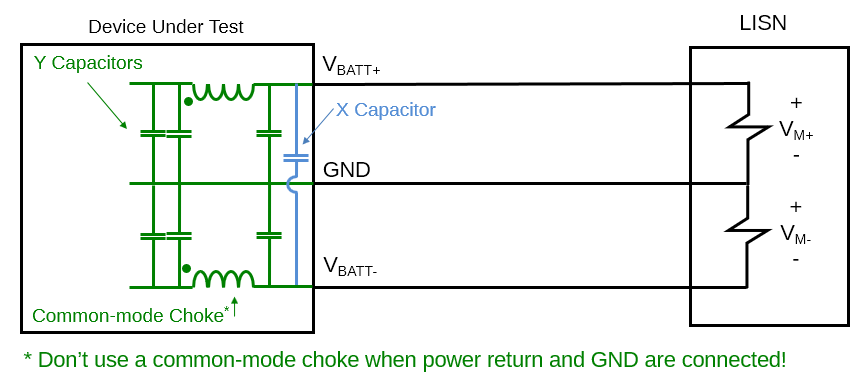EMC Question of the Week: February 19, 2024

On a cable with three wires: power, power-return, and ground, the common-mode current is the vector sum of the currents flowing on
- power and power-return
- power-return and ground
- all three wires
- either (a) or (c)
Answer
The best answer is “d.” There are two conflicting definitions of common-mode current that are often applied to three-conductor transmission lines. Three-conductor transmission lines support two independent propagation modes, differential mode and common mode. Common-mode propagation is characterized by current that flows in one direction on two of the conductors and returns on the third conductor (typically labeled ground). Both the common-mode and the differential-mode carry power from one end of the transmission line to the other. Both are TEM propagation modes. Both can contribute to conducted emissions. Neither mode of propagation is a significant source of radiated emissions.
The other definition of common-mode current applicable to a three-wire transmission line is the sum of the current on all three conductors. This is the common-mode current that would be measured with a common-mode current probe around the cable. This current is not associated with a transmission line propagation mode. It does not carry power uniformly from one end of the transmission line to the other. This is the common-mode current generally responsible for significant radiated emissions. It can also contribute significantly to conducted emissions, particularly at the higher measurement frequencies.
In situations where signals or power are distributed on identical conductors with the same impedance to "ground" (i.e., balanced), the intended mode of propagation is typically differential, while any common-mode propagation is generally regarded as noise. This concept helps designers to isolate their signals from external noise sources.
In situations where radiated emissions from a cable are the concern, it's important to recognize that these emissions are due to the common-mode current defined as the vector sum of the current on all the cable conductors.
Note that on a two-wire cable, there is only one propagation mode (differential). In this case, there is no ambiguity regarding the definition of common-mode current. In this case, it is the vector sum of the current on both conductors.
Have a comment or question regarding this solution? We'd like to hear from you. Email us at
